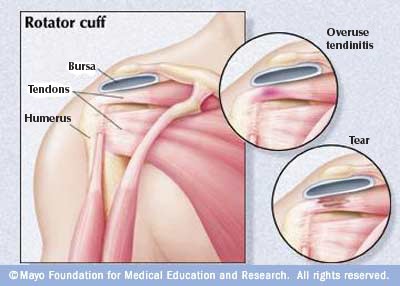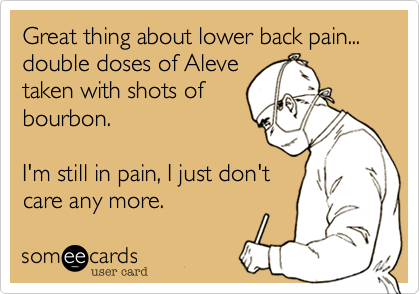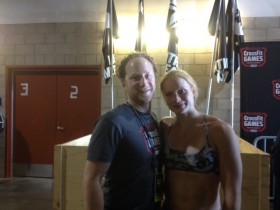Dealing with injury at the 2013 CrossFit Games [Guest Post]
![Dealing with injury at the 2013 CrossFit Games [Guest Post]](https://cdn.proshark.com/daimanuel/2013/08/rich-at-games-2011.jpg)
2013 CrossFit Games… what an experience!
As part of the Athlete Services Team, my job was to aid the competitors with their injuries throughout the competition.
Before and after every event, both the individuals and team athletes would come into our designated area signing up for injury relief. At times, it was like gladiators in the prep before a battle or a make shift hospital in a military war zone. Okay, slight exaggeration, but it was pretty intense at times. Between the Rock Tape Crew and the Airrosti Bodywork team, we were slammed with athletes needing work all day, every day!
I was a member of the Airrosti bodywork crew. I am an Active Release Technique (ART) Specialist and Orthopedic Certified Massage Therapist now in my 13th year of practice. This was my fifth consecutive year volunteering at the CrossFit Games and have 7 years of working on CrossFitters in Northern California at CrossFit East Bay.
[caption id="attachment_11756" align="alignnone" width="502"] Me working on Rich Froning at the 2011 CrossFit Games[/caption]
Me working on Rich Froning at the 2011 CrossFit Games[/caption]
[highlight]A bunch of my time is spent working on two parts of the body where athletes are definitely prone to injuries -- the shoulder and lower back.[/highlight]
In this post, I hope to go a bit deeper on those two body parts and WHY, or more specifically, WHAT is often the cause of these injuries.
To be more specific, the Subscapularis or internal rotator cuff muscle is the real culprit. This muscle gets no respect and very little attention. It’s the largest and hardest working of the rotator cuff family but the Suprasinatus (the smallest and weakest of the four muscles is always in the spotlight overshadowing the others. That’s because it tears the most!

The Subscap:(inside the armpit) When it gets tight or over worked and weak adhesions develop limiting movement, strength and most importantly it actually rotates the shoulder or humerus medially (internally) . Again this creates mobility limitations or clicking in the shoulder capsule with range of motion. Other muscles in the shoulder are then recruited and have to work harder and injury likely occurs elsewhere.
Bodywork is always helpful in breaking up adhesions from overworked muscles in the Subscapularis. For self-care, I recommend the Theracane. However, if you have the extra money consider a well-trained bodyworker or Chiro who does treat soft tissue as its very hard to get your own fingers in there or to roll it out with a lacrosse ball. In addition, as always, warm up well, listen to your body and stretch after every work out.
Here's K-Starr with a great mashing technique for hitting the subscap:
http://www.youtube.com/watch?v=XwYPajXfx4A
 Again there are many different types of low back injuries, however I feel in overall prevention of low back injuries, one must look at the function of the hip flexors. Think of them as the front of the back muscles. The psoas, illiacus, and rectus femoris, connect your legs into your back. When they are overworked, or over stabilizing, they get tight and develop adhesions. This leads to asymmetrical anterior pelvic tilts or rotations of the hip basically. This is often the case when one leg seems longer than the other. Imagine a car being out of alignment. What does that do to the tires?
Again there are many different types of low back injuries, however I feel in overall prevention of low back injuries, one must look at the function of the hip flexors. Think of them as the front of the back muscles. The psoas, illiacus, and rectus femoris, connect your legs into your back. When they are overworked, or over stabilizing, they get tight and develop adhesions. This leads to asymmetrical anterior pelvic tilts or rotations of the hip basically. This is often the case when one leg seems longer than the other. Imagine a car being out of alignment. What does that do to the tires?
 Well in this case, hip flexors can affect your low back, knees and feet. Heck, they can affect even the neck and shoulder as the rest of your body will attempt to balance your out of balance hips.
Well in this case, hip flexors can affect your low back, knees and feet. Heck, they can affect even the neck and shoulder as the rest of your body will attempt to balance your out of balance hips.
I hope that makes sense. If not, image holding a kettle bell in your right hand. Your right neck and shoulder region will have to tighten up, while your lower back on the left side will counter balance and tight up as well. Over time you can see how the entire body can get out of balance from one action.
I don’t want to get too off track, but the reality is the hip flexors pull down on the back when they are too tight or not functioning correctly and making the opposing muscles (glutts and hamstrings) work even harder than they already do in a lengthened or weakened state. This in turn can lead to injuries.
Stretch your hip flexors! Forward lunge stretches are underrated. Stretch them quads too! Want a deeper forward bend or squat…It’s all in the Hip Flexors yo! Also it is important to also have a strong core too. That could also be why the hip flexors are working so hard.
Here's a quick video from mobility guru, Kelly Starrett care of MobilityWOD.com
http://www.youtube.com/watch?v=yzHcIzIVRKw
I hope this was a helpful post or, if anything, a nice reminder to continue to stretch. Above all listen to your body, if it's hurting, that’s your body’s way of saying, "hey! I’m getting pissed off, Listen to me!"
Hope to see you at the games next year!
[divider]
[caption id="attachment_11754" align="alignleft" width="280"] Me & Annie T[/caption]
Me & Annie T[/caption]
Ed Rockowitz, ART
NCBTMB Con Edu Instructor
Ahhh Massage Owner
www.ahhhmassage.net
510-882-5224
[divider]
As part of the Athlete Services Team, my job was to aid the competitors with their injuries throughout the competition.
Before and after every event, both the individuals and team athletes would come into our designated area signing up for injury relief. At times, it was like gladiators in the prep before a battle or a make shift hospital in a military war zone. Okay, slight exaggeration, but it was pretty intense at times. Between the Rock Tape Crew and the Airrosti Bodywork team, we were slammed with athletes needing work all day, every day!
I was a member of the Airrosti bodywork crew. I am an Active Release Technique (ART) Specialist and Orthopedic Certified Massage Therapist now in my 13th year of practice. This was my fifth consecutive year volunteering at the CrossFit Games and have 7 years of working on CrossFitters in Northern California at CrossFit East Bay.
[caption id="attachment_11756" align="alignnone" width="502"]
 Me working on Rich Froning at the 2011 CrossFit Games[/caption]
Me working on Rich Froning at the 2011 CrossFit Games[/caption]Often times after an event like this, I get asked, “What are the most common injuries"?
[highlight]A bunch of my time is spent working on two parts of the body where athletes are definitely prone to injuries -- the shoulder and lower back.[/highlight]
In this post, I hope to go a bit deeper on those two body parts and WHY, or more specifically, WHAT is often the cause of these injuries.
1) Shoulder injuries:
To be more specific, the Subscapularis or internal rotator cuff muscle is the real culprit. This muscle gets no respect and very little attention. It’s the largest and hardest working of the rotator cuff family but the Suprasinatus (the smallest and weakest of the four muscles is always in the spotlight overshadowing the others. That’s because it tears the most!

The Subscap:(inside the armpit) When it gets tight or over worked and weak adhesions develop limiting movement, strength and most importantly it actually rotates the shoulder or humerus medially (internally) . Again this creates mobility limitations or clicking in the shoulder capsule with range of motion. Other muscles in the shoulder are then recruited and have to work harder and injury likely occurs elsewhere.
My recommendation:
Bodywork is always helpful in breaking up adhesions from overworked muscles in the Subscapularis. For self-care, I recommend the Theracane. However, if you have the extra money consider a well-trained bodyworker or Chiro who does treat soft tissue as its very hard to get your own fingers in there or to roll it out with a lacrosse ball. In addition, as always, warm up well, listen to your body and stretch after every work out.
Here's K-Starr with a great mashing technique for hitting the subscap:
http://www.youtube.com/watch?v=XwYPajXfx4A
2) Low Back Injuries:
 Again there are many different types of low back injuries, however I feel in overall prevention of low back injuries, one must look at the function of the hip flexors. Think of them as the front of the back muscles. The psoas, illiacus, and rectus femoris, connect your legs into your back. When they are overworked, or over stabilizing, they get tight and develop adhesions. This leads to asymmetrical anterior pelvic tilts or rotations of the hip basically. This is often the case when one leg seems longer than the other. Imagine a car being out of alignment. What does that do to the tires?
Again there are many different types of low back injuries, however I feel in overall prevention of low back injuries, one must look at the function of the hip flexors. Think of them as the front of the back muscles. The psoas, illiacus, and rectus femoris, connect your legs into your back. When they are overworked, or over stabilizing, they get tight and develop adhesions. This leads to asymmetrical anterior pelvic tilts or rotations of the hip basically. This is often the case when one leg seems longer than the other. Imagine a car being out of alignment. What does that do to the tires? Well in this case, hip flexors can affect your low back, knees and feet. Heck, they can affect even the neck and shoulder as the rest of your body will attempt to balance your out of balance hips.
Well in this case, hip flexors can affect your low back, knees and feet. Heck, they can affect even the neck and shoulder as the rest of your body will attempt to balance your out of balance hips.I hope that makes sense. If not, image holding a kettle bell in your right hand. Your right neck and shoulder region will have to tighten up, while your lower back on the left side will counter balance and tight up as well. Over time you can see how the entire body can get out of balance from one action.
I don’t want to get too off track, but the reality is the hip flexors pull down on the back when they are too tight or not functioning correctly and making the opposing muscles (glutts and hamstrings) work even harder than they already do in a lengthened or weakened state. This in turn can lead to injuries.
My recommendations:
Stretch your hip flexors! Forward lunge stretches are underrated. Stretch them quads too! Want a deeper forward bend or squat…It’s all in the Hip Flexors yo! Also it is important to also have a strong core too. That could also be why the hip flexors are working so hard.
Here's a quick video from mobility guru, Kelly Starrett care of MobilityWOD.com
http://www.youtube.com/watch?v=yzHcIzIVRKw
I hope this was a helpful post or, if anything, a nice reminder to continue to stretch. Above all listen to your body, if it's hurting, that’s your body’s way of saying, "hey! I’m getting pissed off, Listen to me!"
Hope to see you at the games next year!
[divider]
[caption id="attachment_11754" align="alignleft" width="280"]
 Me & Annie T[/caption]
Me & Annie T[/caption]Ed Rockowitz, ART
NCBTMB Con Edu Instructor
Ahhh Massage Owner
www.ahhhmassage.net
510-882-5224
[divider]




































































































